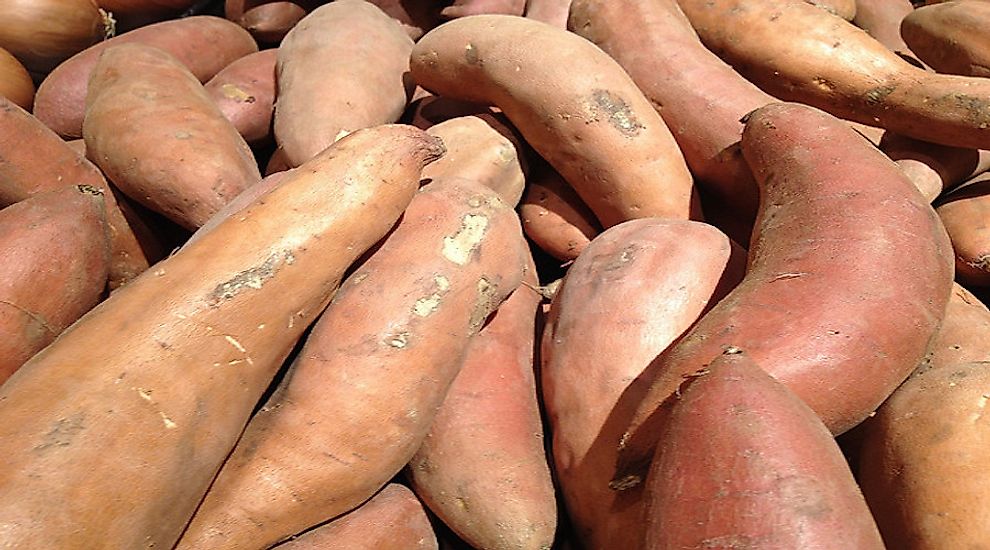World Leaders In Yam Production

Yam is the common name given to a crop species that form edible tubers and belong to the Dioscorea genus. The crop is widely cultivated in South and Central America, Africa, Oceania, and Asia. Yams whose tubers are also called yams have a variety of different cultivars. There are varieties of yams that people call sweet potatoes in parts of Canada, and the United States. However, sweet potatoes are not part of Dioscoreaceae family but belong to the unrelated Convolvulaceae, morning glory family.
Description Of The Yam Plant
Yams are monocots native to Africa and Asia and related to grasses and lilies. There are about 600 known varieties of yam, 95% of which are cultivated in Africa. Yam tubers tend to have different sizes ranging from the size of a small potato to more than 130 pounds. The tubers can potentially grow to a length of 4.9 feet and a height of between 3 to 6 inches. Yam tubers tend to have rough skin that varies in color from light pink to dark brown and is difficult to peel but softens when heated. Much of the vegetable comprises of a soft substance usually known as the 'meat.' The leaves also range in color from purple or pink to yellow or white in mature yams.
The Uses And Benefit Of Yam
Yam tubers have both agricultural and cultural significance especially in Asia, Africa, and Latin America. Yam species from Africa require thorough cooking to render it safe for consumption since they contain various natural substances that can cause illness if eaten when not properly cooked. Boiling, roasting, and frying the yam are the most common methods of cooking the vegetable in Central and West Africa. In Nigeria, raw yam is cut into pieces and is then left outside to dry until it turns into a dark brown color. Once this happens, the dried pieces are then milled to form a brown powder known as elubo in the local dialect. The powder is used to make a thick starchy paste known as Amala when added to hot boiling water which is then eaten with local sauces and soups. Yam is Nigeria's staple crop where it is celebrated through the yam festivals.
In the Philippines, yams are consumed in the form of sweetened desserts and are also used as an ice cream ingredient. In Vietnam, the crop is used to make soup while in Indonesia it is used to make dessert. Yams in Japan are eaten raw as a side dish or used in the making of noodles. Another variety of yam in Japan is used to make ice cream and other traditional wagashi cakes, candy, and other sweets. Despite yams being starchy, they have some nutritional value such as dietary fiber which is good for digestion, and they are a good source of vitamin C. Yams also contain important vitamins and minerals such as vitamin B1.
Top Yam Producing Countries In The World
Yams are largely produced in the nations of Africa accounting for 95% of the total production of yam in the world. Nigeria is the world's leading producer of this food crop with an estimated 32,318,900 tons in 2012. Ghana follows in second place with an estimated 6,638,867 tons which are nearly five times less the total yam production in Nigeria while Ivory Coast comes in third with 5,674,696 tons in the production of yam.
World Leaders In Yam Production
| Rank | Country | Production, 2012 (in tonnes) |
|---|---|---|
| 1 | Nigeria | 32,318,900 |
| 2 | Ghana | 6,638,867 |
| 3 | Ivory Coast | 5,674,696 |
| 4 | Benin | 2,810,745 |
| 5 | Ethiopia | 1,117,733 |
| 6 | Togo | 864,408 |
| 7 | Cameroon | 537,802 |
| 8 | Central African Republic | 460,000 |
| 9 | Chad | 420,000 |
| 10 | Cuba | 366,182 |











